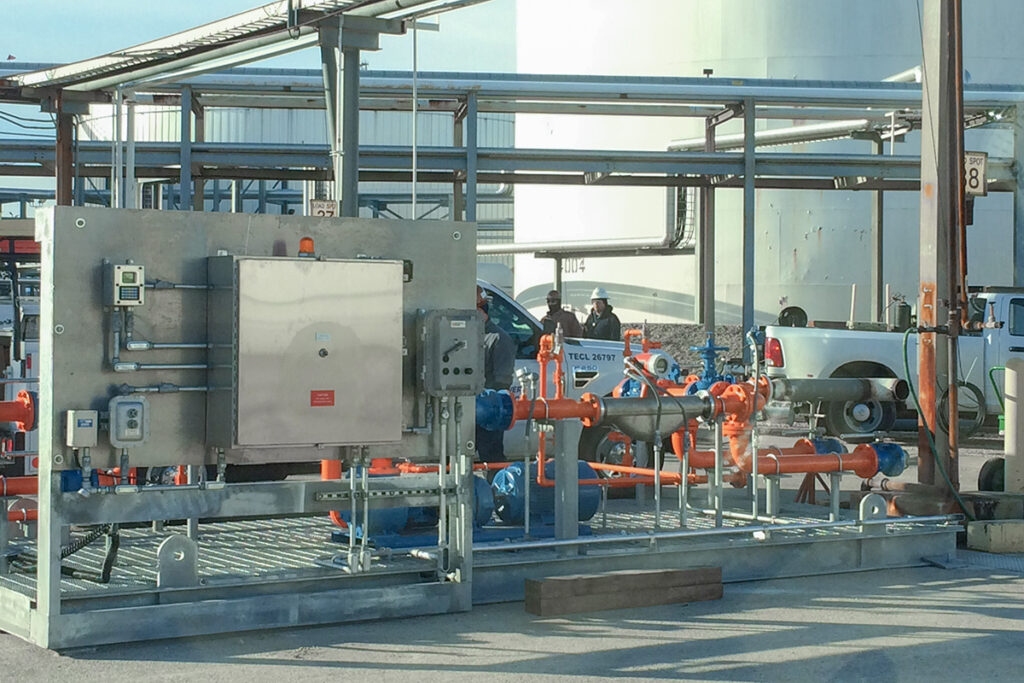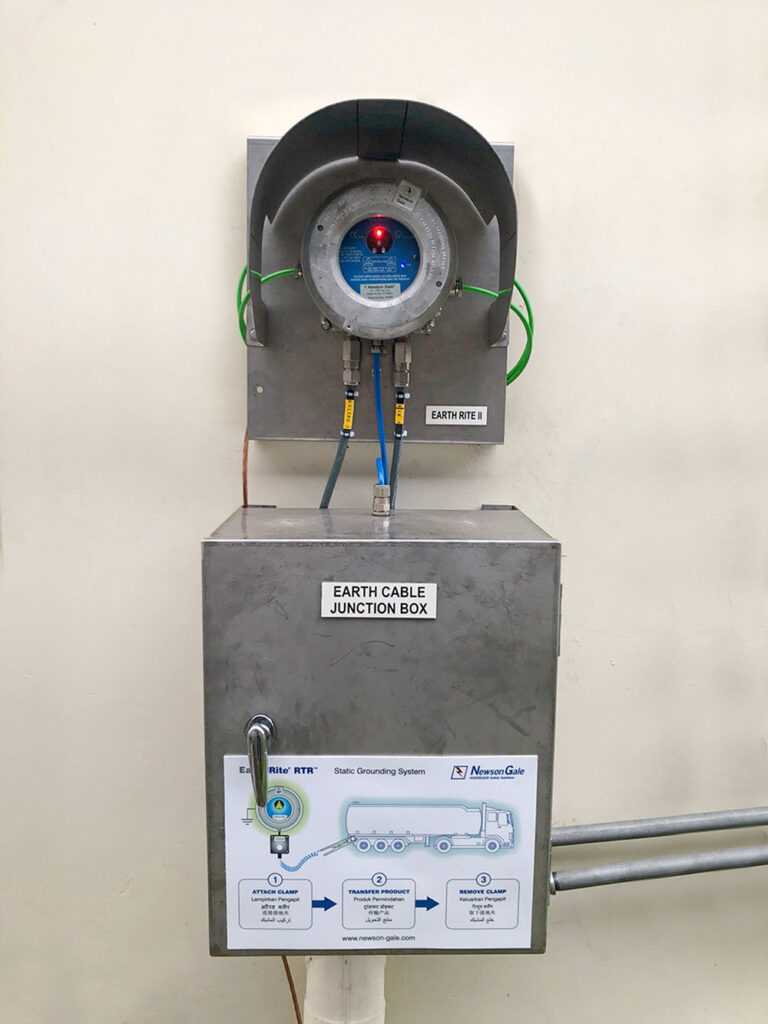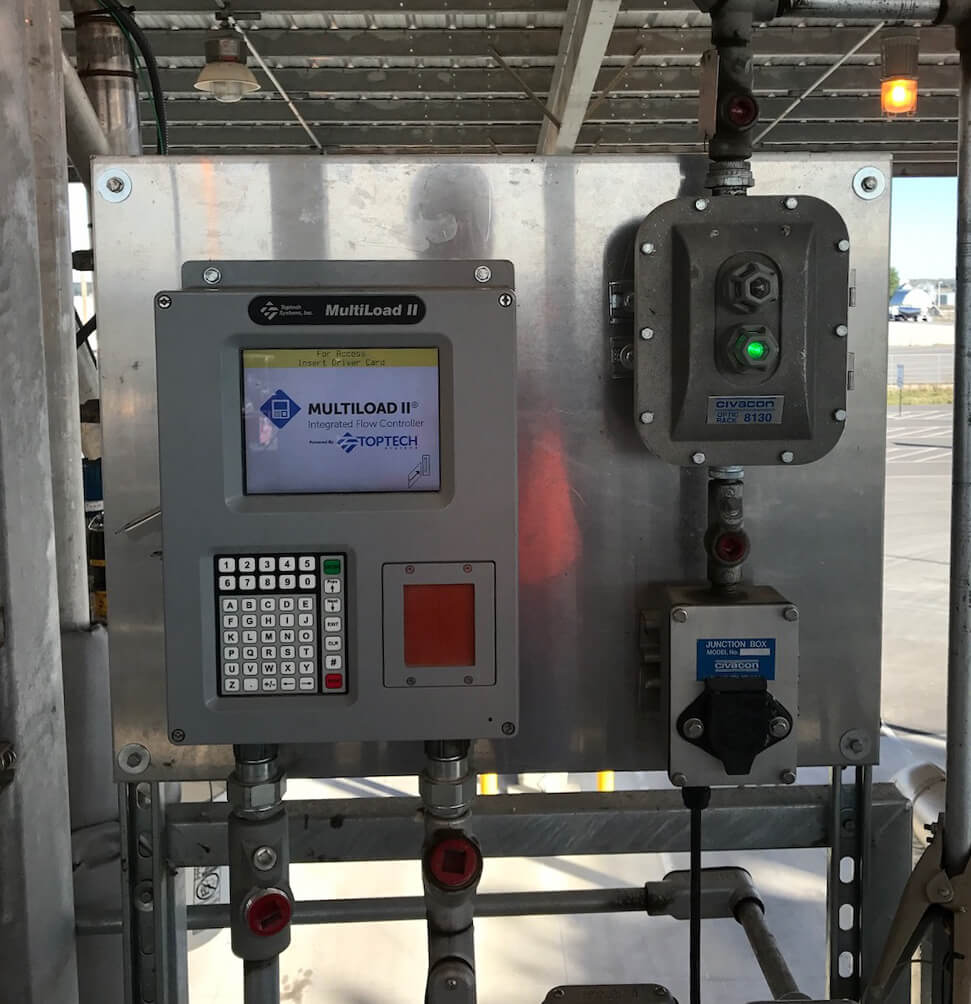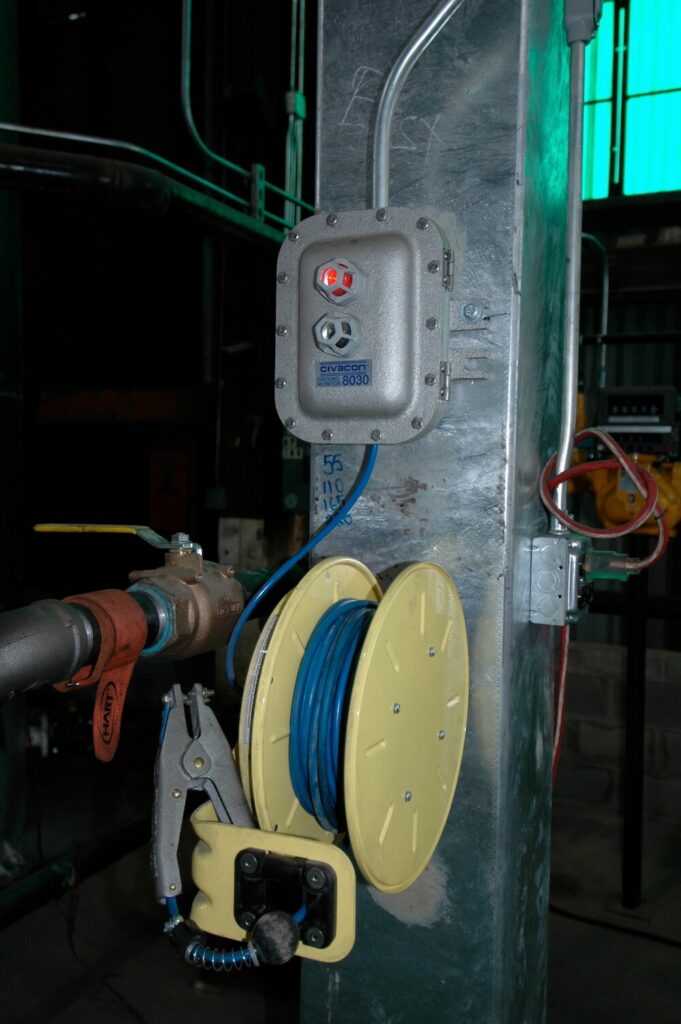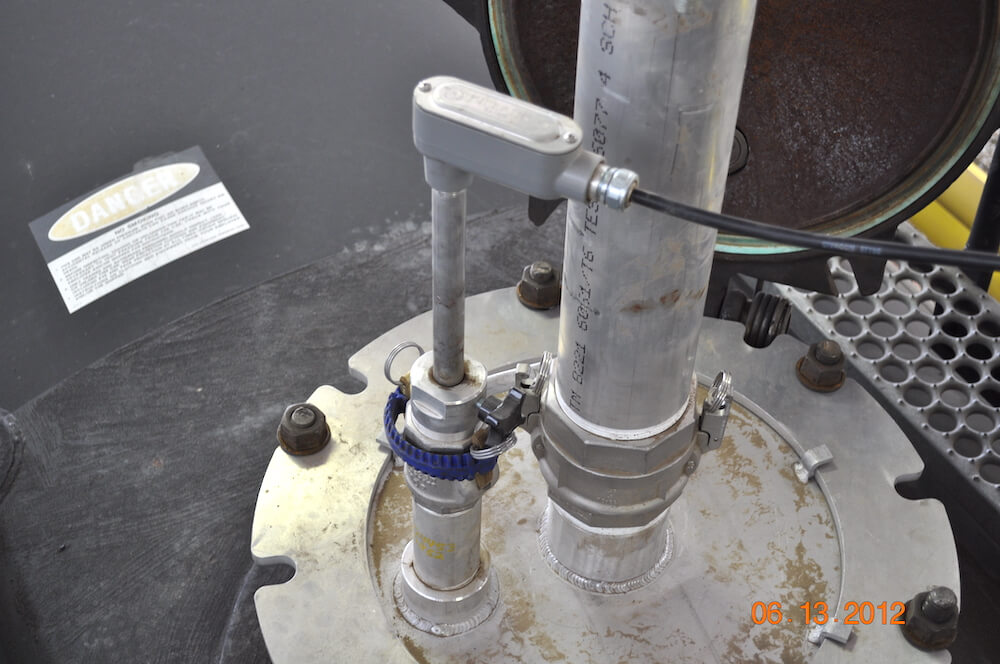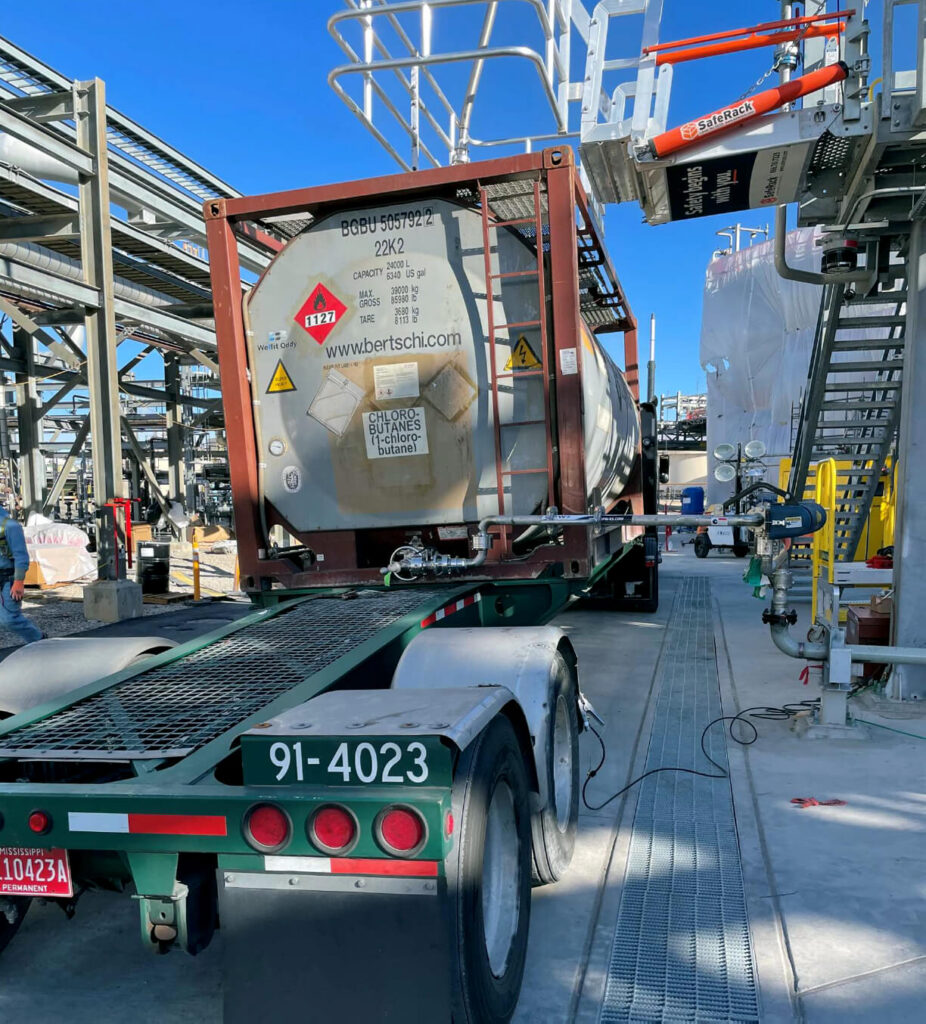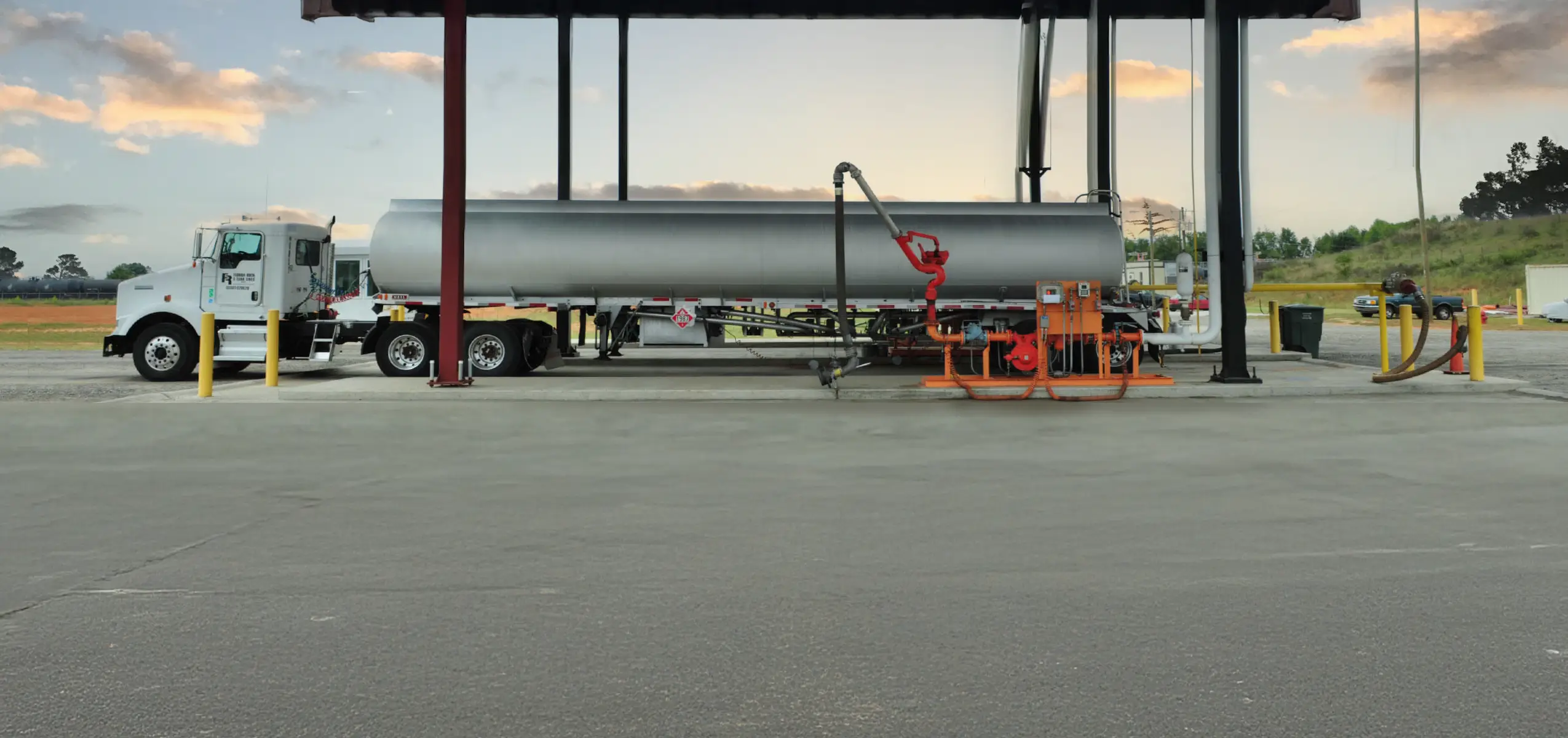
Grounding & Monitoring
Protect personnel, product, and terminals with static grounding (earthing) solutions from SafeRack
Grounding/Earthing
Protect personnel, product, and terminals with static grounding (earthing)
Metering
Pressure Gauges, Meters, Sight-flow indicators
Overfill Protection
Preventing costly spills and ensuring safety during tank loading operations
Things can
escalate quickly
Our solutions are compliant with IEC 60079-32; NFPA77;
API RP 2003 and other world-wide technical standards and codes
When loading petrochemical or other combustible materials, static electricity safety and the importance of vehicle grounding cannot be overemphasized. Careful precautions must be taken to assess risk and avoid accidents.
Vehicle and Container Grounding (Earthing) & Monitoring
Wherever there is a real danger of conductive plant equipment and materials accumulating static charge within flammable and combustible atmospheres, Newson Gale’s range of Earth-Rite Static Ground Monitoring & Interlock Systems provide added operational safety for critical hazardous area processing and handling operations.
Our experts ensure our static grounding & interlock systems use international “Best Practice” and are in compliance with IEC 60079-32; NFPA77; API RP 2003 and other world-wide technical standards and codes of practice governing the control of static electricity in hazardous areas.
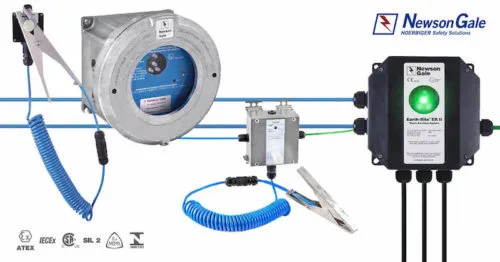
Newson Gale
Newson Gale has been developing industry-standard grounding systems for over 30 years. SafeRack is proud to partner with such a respected safety brand and carries many of its products (including its award-winning Earth-Rite series).
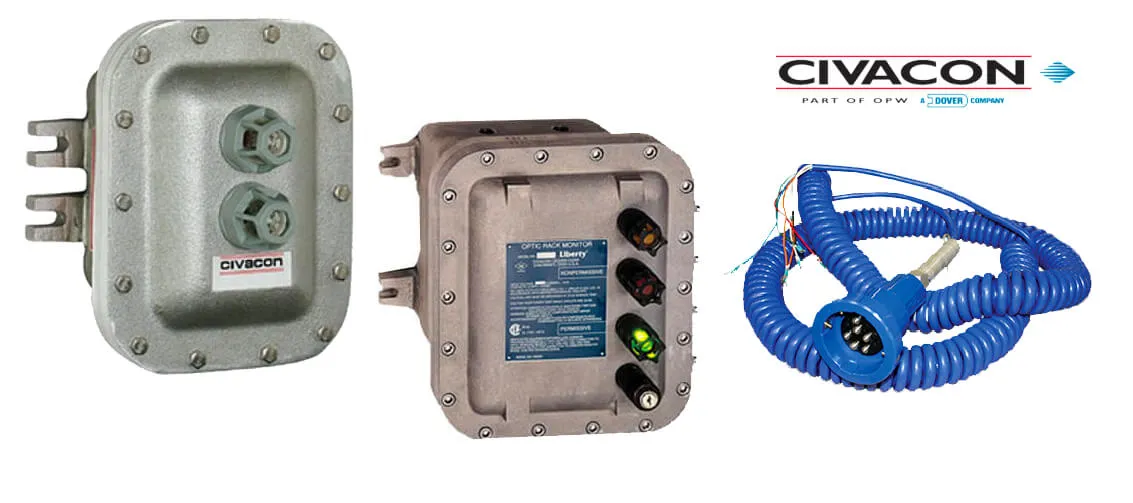
Civacon
Civacon is a branch of OPW Global specializing in grounding and monitoring safety products. Its product set compliments that of Newson Gale, allowing SafeRack to offer a comprehensive suite of grounding and monitoring solutions.

What is Truck Grounding or Railcar Grounding and Why is it Necessary?
On cold, dry afternoons, walking across a carpet to open the front door can create a spark that jumps between the hand and the doorknob. That release of electricity comes from a buildup of static electricity in the human body that can reach an 10-15 kV (kilovolts). The discharge of that voltage can measure just 20-30 mJ (milliJoule), well above the threshold for igniting propane, gasoline vapors, or even fine dust particles.








